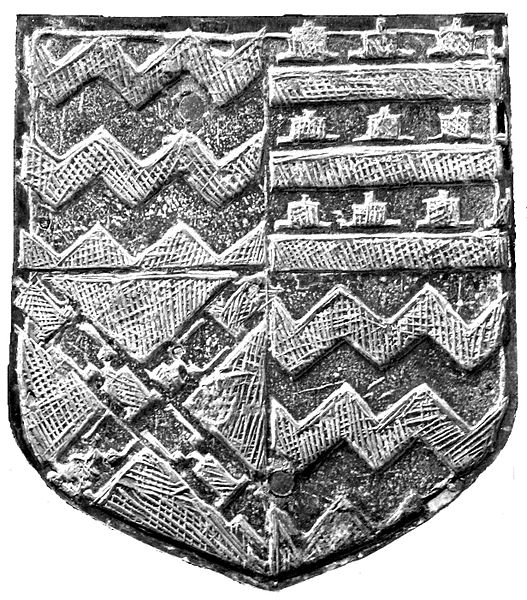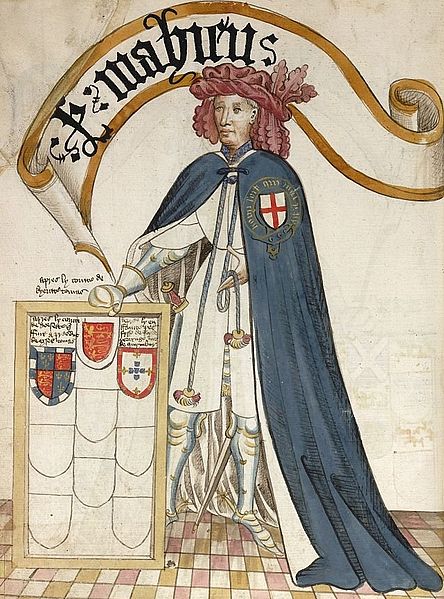The Manor of Shirwell was a manor in North Devon, England, centred on the village of Shirwell and largely co-terminous with the parish of Shirwell. It was for many centuries successively the seat of two of the leading families of North Devon, the Beaumonts and their heirs the Chichesters of Raleigh, Pilton, both of which families were seated at the estate of Youlston within the manor of Shirwell. The manor house which survives today known as Youlston Park is one of the most architecturally important historic houses in North Devon and exists largely in its Georgian form, but retains many impressive late 17th-century interiors.
On a brass escutcheon on the monument to Sir John Basset (1462–1528) of Umberleigh in Atherington Church, possibly removed from the Umberleigh Chapel, the arms of Bassett Barry wavy of six or and gules (1st & 4th) quarter Beaumont (2nd quarter) and Willington (3rd quarter)
Effigy of Blanche Bourchier (died 1483), wife of Philip Beaumont (1432–1473), Shirwell Church
Image: Beaumont Willington Arms Gittisham Devon
The feudal barony of Dunster was an English feudal barony with its caput at Dunster Castle in Somerset. During the reign of King Henry I (1100–1135) the barony comprised forty knight's fees and was later enlarged. In about 1150 the manors retained in demesne were Dunster, Minehead, Cutcombe, Kilton and Carhampton in Somerset, and Ham in Dorset.
Dunster Castle, caput of the feudal barony of Dunster. Situated on a strategically defensive tor, at one time the seat of an Anglo-Saxon named Dun, in the valley of the River Avill
Sir John de Mohun, KG, (c. 1320 – 1375), from the Bruges Garter Book, 1430/1440
Effigy of Lady Joan Mohun (died 1404), wife of Sir John de Mohun (c. 1320 – 1375), Canterbury Cathedral, Crypt.
1562 portrait of Margaret Luttrell (1500–1580) aged 62, collection of National Trust, Dunster Castle







